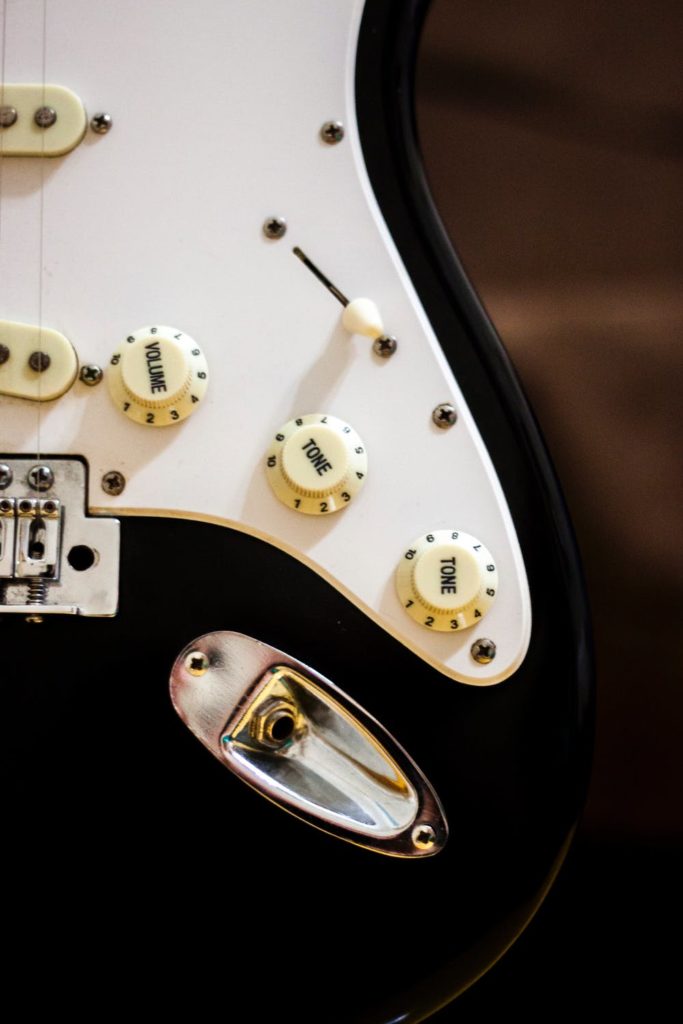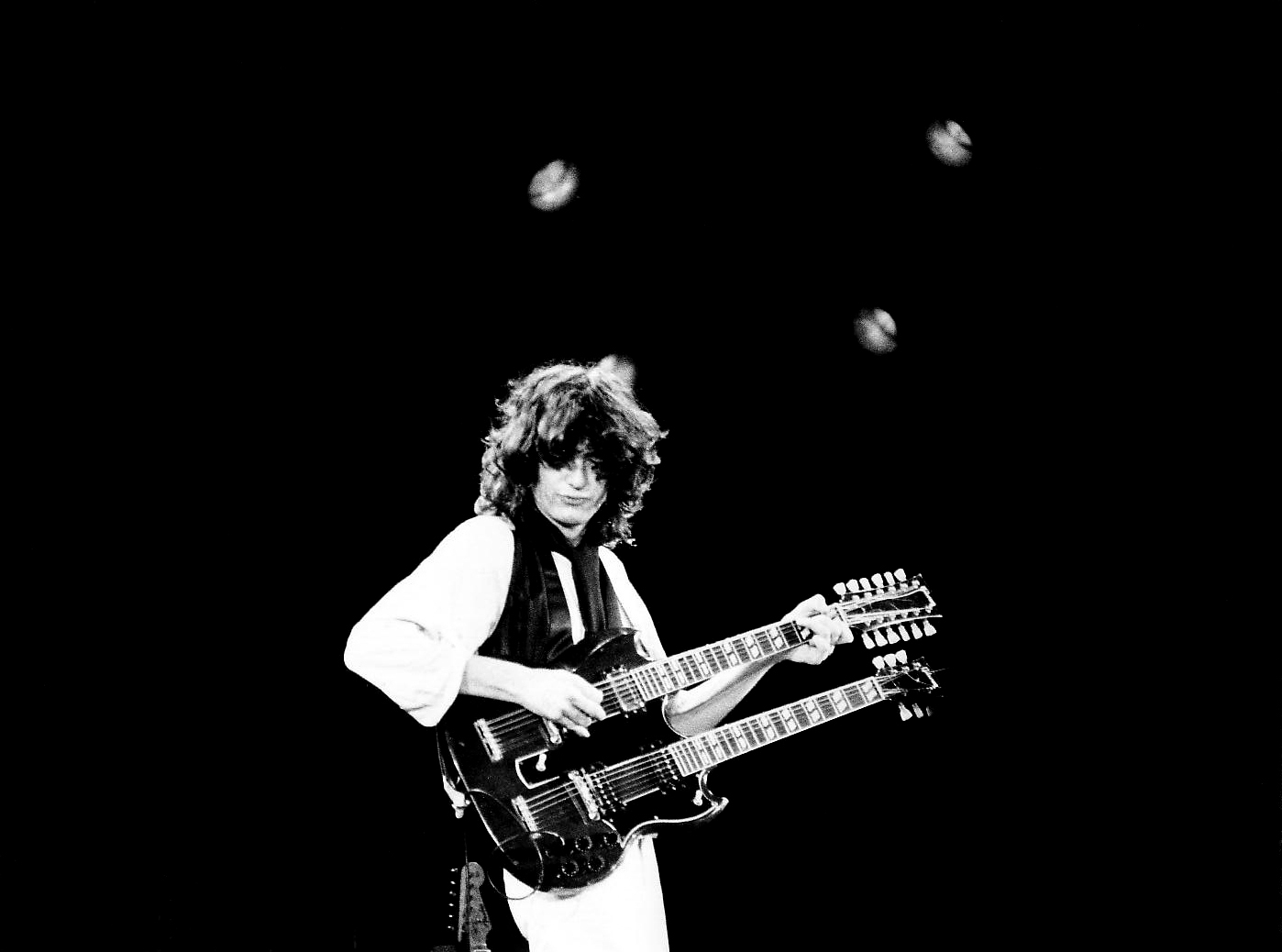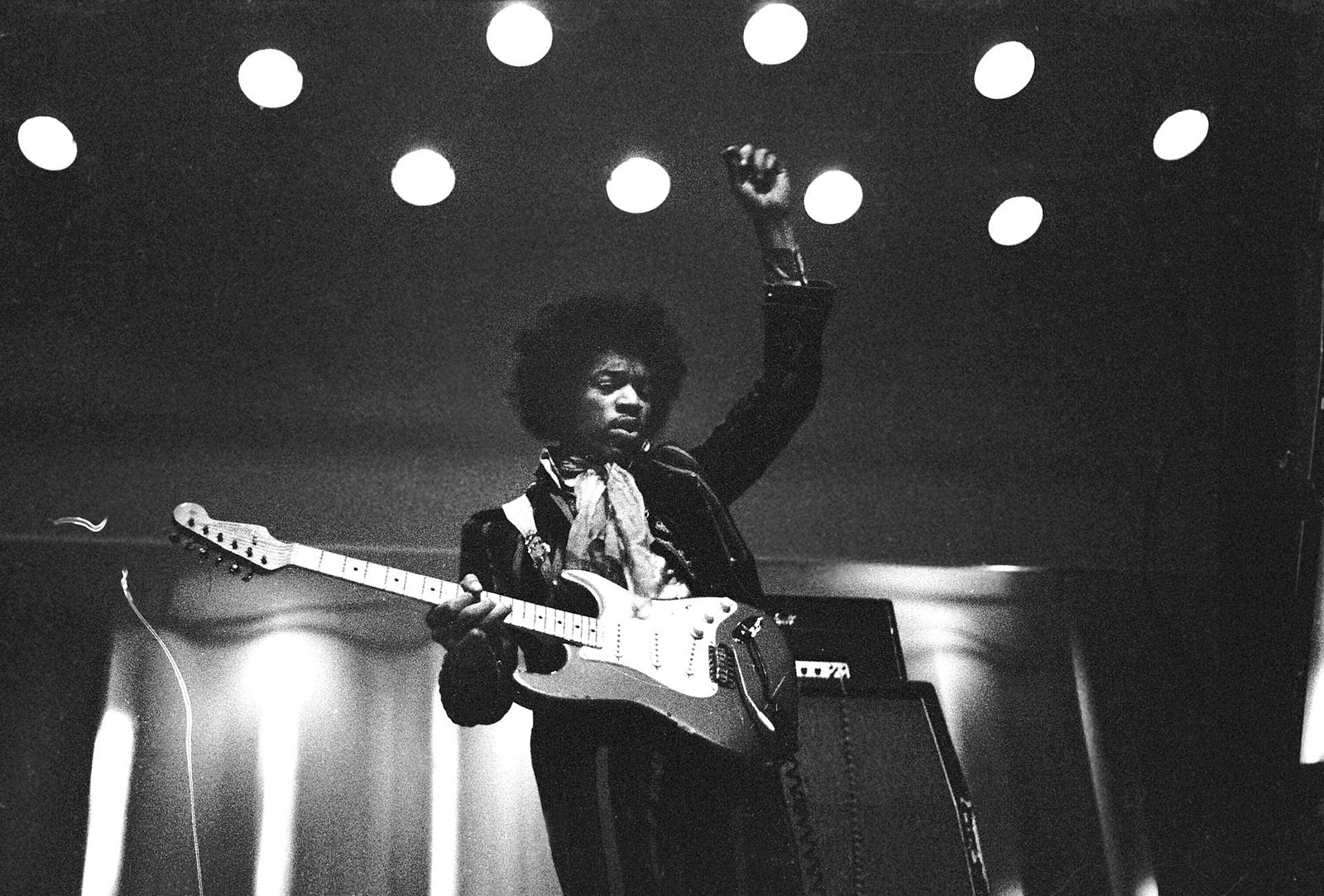Instrument Profile
Rock Guitar
The solid-body electric guitar is the youngest member of the guitar family, yet it has established itself as the predominant musical instrument among rock, pop, and a handful of jazz musicians.
The solid-body electric guitar is the youngest member of the guitar family, yet it has established itself as the predominant musical instrument among rock, pop, and a handful of jazz musicians.

The invention of the electric guitar revolutionized rock and roll music almost from the start. Rock had evolved out of the rhythm and blues tradition by making the blues beat and the boogie-woogie pattern louder, faster and more aggressive. It changed the nature of the lyric from sad and bitter to easygoing and carefree. Although rock’s early pioneers were predominantly piano-playing singers like Little Richard and Jerry Lee Lewis, in the mid 1950s guitarists Chuck Berry (b. 1926), Bo Diddley (b. 1928), Buddy Holly (1936-1959), and Carl Perkins (1932-1998) became some of the leading personalities of the new style. Elvis Presley’s guitarist, Scotty Moore (b. 1931), also was a leading rock innovator, albeit behind the scenes with solos and riffs in some of the King’s best-known songs, like Jailhouse Rock and Hound Dog. Scotty Moore’s style became known as rockabilly because it combined elements of hillbilly and bluegrass music with rock and roll.
In the late 50s and early 60s, England became an important center for innovative music-making. English groups like The Beatles, The Rolling Stones, The Who, and The Yardbirds studied American musical styles and incorporated them into their own unique sound. The Beatles, for example, modeled themselves on the more popular American rock bands and guitarists, specifically Carl Perkins and Elvis Presley. The Stones were much more influenced by rhythm and blues music, and even took their name from a Muddy Waters tune. Two guitarists with very different musical sensibilities helped to create the Stones sound: Mick Taylor (b.1949) and Keith Richards (b. 1943). Pete Townshend (b. 1945) from The Who revolutionized how the guitar was played by occasionally destroying his instrument after a concert and otherwise creating a theatrical aspect to his playing with windmill power chords and wild onstage jumps. Other English guitarists took a more sober approach to playing their instruments. Eric Clapton (b. 1945) steeped himself in the blues tradition and, while playing with the Yardbirds and John Mayall’s Bluesbrakers, cultivated a unique bluesman personality that mingled with his position as a so-called guitar hero. During his time with Cream, Clapton and other British guitarists like Jeff Beck (b. 1944) helped to define the UK Blues style. In America, west-coast guitarist Carlos Santana (b. 1947) successfully fused rock with elements of Afro-Cuban music.
No other guitarist, however, broke the mold as Jimi Hendrix (1942-1970) did. Hendrix was from Seattle, Washington, and started playing blues as a young man in various groups around the country. Jimi redefined the nature of the electric guitar as an instrument and, in the process, changed the shape of rock and roll. He developed techniques that gave distortion a music-making capability, forging his performances with power, energy, and distinctiveness. Many of his songs, including Hey Joe and Purple Haze have become rock anthems. In private, Jimi was an introspective and subdued artist but, like many of his fellow rock-and-rollers, lost his battle with drugs and died at an early age.
Jimi Hendrix’s sound was instrumental in the development of a new type of rock music, where the distorted guitar came to play a central role. Heavy Metal initially was pioneered by the group Led Zeppelin, which featured Jimmy Page (b. 1944) as a lead guitarist, composer, arranger, and studio producer. Page extended the guitar’s sonic vocabulary with unusual playing techniques, including the use of a violin bow in Dazed and Confused. Page also was an excellent acoustic guitarist, and used the instrument in unprecedented ways in folk ballads.
Other guitarists who made significant contributions to rock guitar playing during the 1970s include Frank Zappa (1940-1993), Steve Howe (b.1947) of Yes, David Gilmore (b. 1946) from Pink Floyd, and Brian May (b. 1947) from Queen.
In the late 1970s and early 80s, the sound of the rock guitar was redefined once more by Eddie Van Halen. Van Halen developed a variety of new techniques that used controlled feedback, right-hand harmonic picking, and unusual tremolo patterns. Other artists who made an impact on guitar playing in the 80s include Prince, The Edge from U2, Eric Johnson, Yngwie Malmsteen, Mark Knopfler from Dire Straits, and Slash from Guns ‘n Roses. Two of the most skillful and recognized guitar virtuosi of the 90s and into today are Steve Vai and Joe Satriani. Vai made a creative connection with Frank Zappa in the 1980s as a transcriber or Zappa’s solos and as a lead guitarist in his band.


Each of our faculty brings a wealth of performing and teaching experience to Bloomingdale. Browse their individual profiles below to learn about their unique interests, qualifications, and teaching styles.
Our private lessons are ideal for students who want a more attentive and dynamic learning experience and appreciate a one-on-one approach to learning even on a digital platform. We offer 30-minute trial lessons for only $30. Give it a try!
Please contact Registrar at registrar@bsmny.org to register or learn more at our Private Lessons page. (Please note summer rates are different than Fall/Spring.)
Join us for Instrument Discovery Day – January 26th, 11 AM – 1 PM. Explore the violin, guitar, trumpet, and more with the guidance of Bloomingdale’s expert faculty. Explore the violin, guitar, trumpet, and more with Bloomingdale’s expert faculty.
Free & fun for all ages!